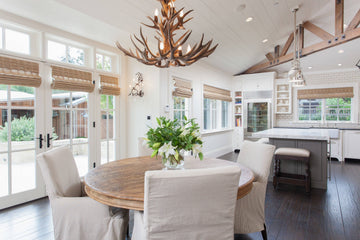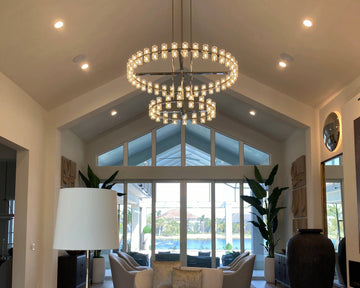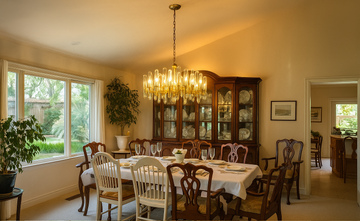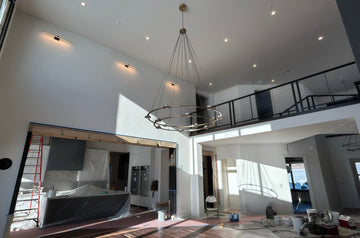A chandelier is more than just a light fixture—it’s a statement piece that can transform the ambiance of any space. However, selecting the right chandelier involves more than picking a beautiful design. Size, style, placement, and functionality all play a crucial role in ensuring it complements your space. This guide will walk you through everything you need to consider before buying a chandelier, helping you make a choice that enhances both aesthetics and practicality.
1. Finding the Perfect Size: Balance is Key
Choosing the right chandelier size ensures that it harmonizes with the room rather than overpowering or underwhelming the space. Here’s how to determine the ideal dimensions:
🔹 For General Spaces (Living Rooms, Foyers, Bedrooms): Measure the room’s length and width in feet, then add those numbers together. The sum (in inches) is a great guideline for the chandelier’s diameter.
💡 Example: A 15x21 ft room → 15+21 = 36 inches (ideal chandelier diameter: ~36 inches).
🔹 For Dining Areas: The chandelier should be around 1/2 to 2/3 the width of the table and hang 30-36 inches above the tabletop.
🔹 For High Ceilings: Add 3 inches of chandelier height for each extra foot of ceiling height beyond 8 feet.
✔ Pro Tip: If your space is extra large, consider layering lighting by adding sconces or pendant lights for a balanced look.
2. Matching the Chandelier Style to Your Décor
A chandelier should complement the room’s aesthetic, acting as an accent piece while maintaining design harmony. Here are some popular styles and their best applications:
✨ Classic Elegance: Crystal chandeliers or empire-style fixtures exude luxury, making them perfect for traditional or opulent interiors.
🏡 Rustic & Farmhouse: Wood, wrought iron, or candle-style chandeliers add warmth and coziness, ideal for casual and country-style homes.
🖤 Modern & Minimalist: Sleek geometric shapes, metal finishes, and sculptural LED designs create a contemporary edge.
🏛 Transitional Charm: A mix of traditional detailing with modern finishes makes for a versatile, timeless choice.
✔ Pro Tip: Match the chandelier’s metal finish with existing hardware (such as cabinet handles or faucets) for a cohesive look.
3. Placement: Elevating the Room’s Ambience
A well-placed chandelier enhances functionality and aesthetics. Here’s where to position it for maximum impact:
✔ Dining Room: Center the chandelier above the table—ensure it doesn’t extend beyond the edges of the dining area.
✔ Living Room: Position it in the room’s focal point, whether that’s above a coffee table or in an open ceiling space.
✔ Entryway/Foyer: Make a statement by choosing a chandelier that reflects your home’s personality and hangs at eye level.
✔ Bedroom: Consider a soft, elegant chandelier for a touch of luxury—opt for dimmable lighting to create a cozy atmosphere.
✔ Staircase: A cascading or multi-tiered chandelier enhances vertical spaces beautifully.
✔ Pro Tip: Use a dimmer switch for chandeliers to adjust brightness based on mood and function.
4. Light Output & Bulb Selection: Function Meets Beauty
A chandelier’s impact is determined by more than just its design—its brightness and warmth are crucial. Consider these factors:
💡 Brightness: Choose the right wattage and number of bulbs to ensure proper illumination without being too harsh.
💡 Color Temperature: Warmer tones (2700K-3000K) create a cozy atmosphere, while cooler tones (4000K+) feel modern and bright.
💡 Dimmability: Opt for dimmable LEDs to adjust brightness based on different settings and moods.
✔ Pro Tip: If your chandelier is the primary light source in a room, ensure it provides enough lumens (general rule: 200-400 lumens per square meter).
Final Thoughts: Making the Right Investment
A well-chosen chandelier is an investment in both style and functionality. By carefully considering size, style, placement, and lighting needs, you can select a fixture that not only complements your space but enhances its overall aesthetic.
✨ Ready to find the perfect chandelier? Explore our collection and illuminate your home in style! ✨







